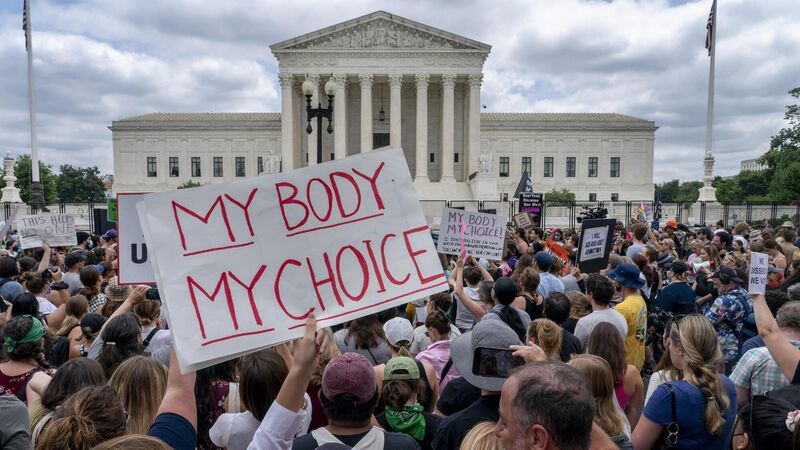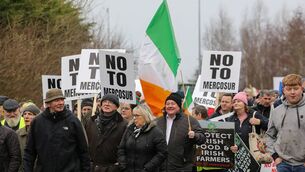Claire McGing: Overturning of Roe raises crucial questions about gender and access to power

Abortion rights campaigners protest outside the Supreme Court in Washington on Friday following the US Supreme Court's decision to overturn Roe v Wade. Picture: AP/Gemunu Amarasinghe
Last week, the US Supreme Court overturned the landmark Roe v Wade case, ending the only federal protections for abortion in America.
The court’s move means abortion could soon be banned in up to 26 states; 13 states have trigger laws banning or curtailing terminations of pregnancy almost immediately.










